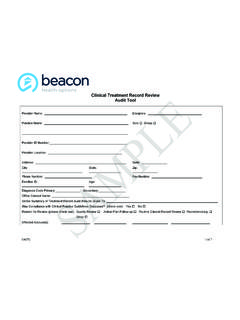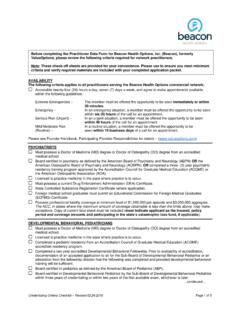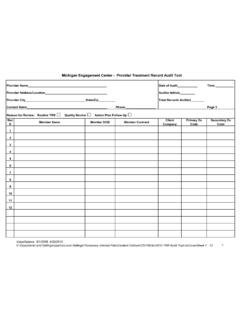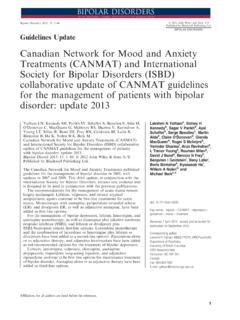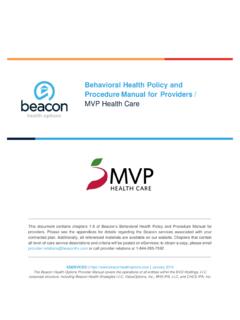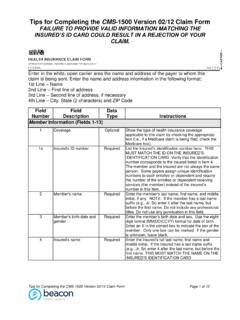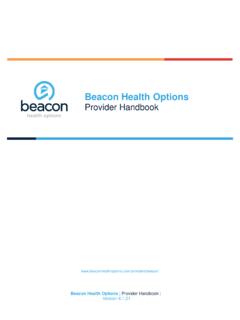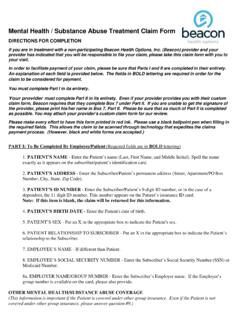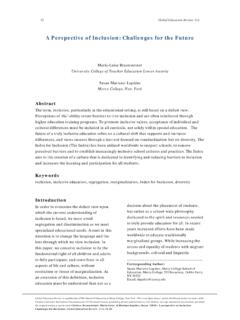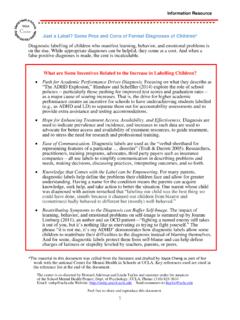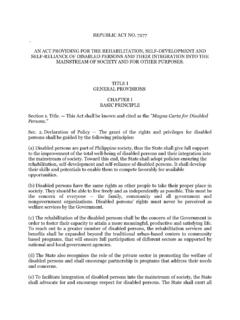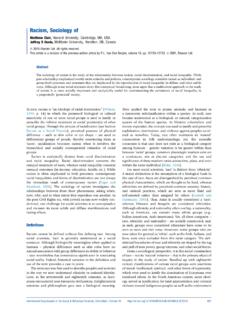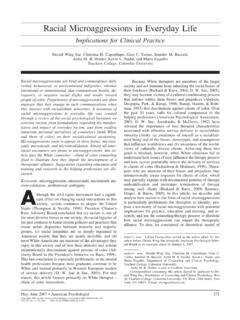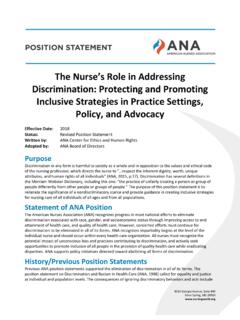Transcription of Cultural Competency Training - Beacon Health Options
1 Cultural Competency TrainingReducing Health Disparitiesby Addressing CulturalDiversityTrainingGoalsCultural culture and the benefits of Health care for various subcultures and populations in the on strategies when working with seniors and people how to access interpretation services and written materials in alternative languages andformatsCulture and Cultural CompetenceCultural CompetencyTraining3 Defining Culture and CulturalCompetence Culture refers to integrated patterns of human behavior that include the language, thoughts, actions, customs, beliefs, values and institutions that unite a group ofpeople.
2 Cultural competence is the capability of effectively interacting with people from CompetencyTraining4 How Does Culture Impact the Care That is Given to My Patients? Cultural CompetencyTraining5 Cultureinforms: Concepts of Health andhealing How illness, disease and their causes areperceived Behaviors of patients who are seeking healthcare Attitudes toward Health careprovidersCulture Impacts Every Health CareEncounter Who providestreatment? What is considered a healthproblem? What type of treatment is needed? Where is caresought? How symptomsare expressed HowrightsandprotectionsareunderstoodBeca use Health care is a Cultural construct based on beliefs about the nature of disease and the human body, Cultural issues are actually central in the delivery of CompetencyTraining6 Adapted from: Communication.
3 The Foundation of Culturally CompetentCareCultural CompetencyTraining7 Limited English Proficiency(LEP) Limited English Proficiency is a term that describes a member who has an inability or a limited ability to speak, read, write or understand the English language on a level that permits that individual to interact effectively with Health care providers or Health planemployees. Who arethey? 20 percent of people living in the speak a language other than Englishin theirhome. Hispanic population grew by 43 percent in the between 2000 and2010. 17 percent of the foreign-born population in the are classified asnewly arrived (arriving in 2005 orlater).
4 What do theyexperience? One out of two adult patients has a hard time understanding basichealth information due to lower level Englishfluency. Average physician interrupts a patient within the first CompetencyTraining8 HealthLiteracyCultural CompetencyTraining9 Health literacy is the ability to obtain, process and understand basic Health information and services needed to make appropriatedecisions. Over one third of patients have limited Health literacy, which results in their not understanding what they need to take care of their Health . Limited Health literacy is associated with poor management ofchronic diseases, poor ability to understand and adhere to medication regimens, increased hospitalizations and poor healthoutcomes.
5 Member communications are based on Health literacy and plain languagestandards. The reading ease of written member materials is tested to ensureno higher than a sixth-grade Outcomes of ClearCommunicationReduce Malpractice RiskImproveSafety &AdherencePhysician& Patient SatisfactionImprovedOfficeProcess Saves Time & MoneyCultural CompetencyTraining10 Language Assistance Program (LAP) for Limited English Proficient (LEP)MembersCultural CompetencyTraining11 Beacon is committed to providing free language assistance formembers. Servicesinclude: Free interpreter services for all languages, including AmericanSign Language Providers may call Beacon directly to access telephonic interpreter services while the member is in theoffice.
6 Request for onsite face to face interpreter services must be requested atleastthree days inadvance. Spanish versions of Beacon s public website and membermaterials. TTY/TDDservices. Members may request informing materials in any of thethreshold languages. Members should call the customer service phone number listed onthe back of the member s ID card to request of CulturalInfluencesCultural InfluencesLevel of AcculturationBotanical Treatments &HealersDecision-makingLanguageSkills & PreferencesPrivacyCultural CompetencyTraining12 Clear Communication with LEPM embersCultural CompetencyTraining13 Here s What We Wish Our Health Care Team Knew About Some of Our Members: I tell you I forgot my glasses means I am ashamed to admit I don t read verywell.
7 I don t know what to ask and am hesitant to askyou. When I leave your office, I often don t know what I s What Your Team Can Do: Use a variety ofinstruction methods Encourage questions & useof Ask Me3* Use Teach-backtool** Described on the followingpagesAsk Me 3: Tool for Communicating withMembersCultural CompetencyTraining14 Ask Me 3 is a patient education program designedto: Improve communication between patients and Health careproviders Encourage patients to become active members of their Health care team Promote improved healthoutcomes The program encourages patients to ask their Health care providers is my mainproblem?
8 Do I need todo? is it important for me to dothis? Patients and providers can use this tool in their patient clinical Back: Tool for Communicating withMembersCultural CompetencyTraining15 The Teach-back tool is a research-based Health literacy communication intervention that promotes adherence, quality and patientsafety. You can use itby: Confirming with the patient that you explained information clearly; it is not a test or quiz of patients ormembers. Asking a patient (or family member) in a caring way to explain, in hisor her own words, what he or she needs to know ordo.
9 Checking for understanding and, if needed, explain and CompetencyTraining16 Here s What We Wish Our Health Care Team Knew AboutSome of OurMembers: Iputmedicationintomyearinsteadofmymoutht otreatanearinfection. I am confused about risk and information given in numbers like percentages or ratios. How do I decide what I shoulddo?Here s What Your Team CanDo: Use specific,plain language on prescriptions. Use qualitative, plain language to describe risks and benefits. Avoid using the HealthcareSystemCultural CompetencyTraining17 Here s What We Wish Our Health Care Team Knew AboutSome of OurMembers: My expectations do not align with managed care.
10 I m bewildered by requirements tovisit multipledoctors. I wonder why I have diagnostic testing before a prescription s What Your Team CanDo: Inform patients that they may need follow-upcare. Explain why a patient may need to be seen by anotherdoctor. Emphasize the importance of medication OfficeExpectationsCultural CompetencyTraining18 Here s What We Wish Our Health Care Team Knew AboutSome of OurMembers: I have different expectations abouttime. I prefer to havesomeone of the samegender. I m going to bring friends or family. They want to help s What Your Team CanDo: Upon arrival, inform patient about waittime.
